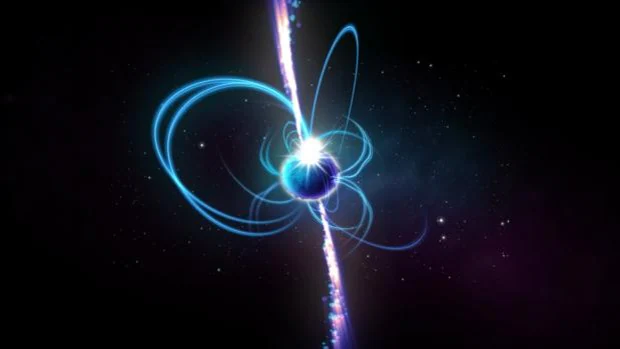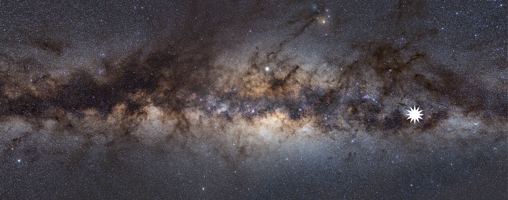Cosmic object Never-before-seen cosmic object found sending out radio waves every 18 minutes
Located 4,000 light-years away, it is smaller than the Sun but becomes one of the brightest spots in the sky.
Astronomers believe it’s a type of magnetar that had been predicted theoretically
 Recreation of what the object would look like if it were a magnetar, an incredibly magnetic neutron star – ICRAR
Recreation of what the object would look like if it were a magnetar, an incredibly magnetic neutron star – ICRAR
MADRID Updated:28/01/2022 09:31hSAVE
RELATED NEWS
- Strange cosmic object found exploding up to 117 times per hour
- Hubble discovers origin of five powerful radio emissions in space
- Giant Gamma-Ray Burst Detected Near Our Galaxy
A team of researchers has discovered about 4,000 light-years from Earth, relatively close on the astronomical scale, a strange object that is unlike anything that has been seen before. For one minute, and every 18.18 minutes, it pulsates with so much energy that, although it is smaller than the Sun, it becomes one of the brightest sources in the sky. Scientists suspect that this is the first finding of a rare type of magnetar, a type of neutron star with an ultra-powerful magnetic field, predicted theoretically but thought to be impossible to observe. Instead of spinning every few seconds, as known magnetars do, this ‘ultra-long period’ one would spin much more slowly.
“This object was appearing and disappearing for a few hours during our observations,” says Natasha Hurley-Walker, of Curtin University’s node of the International Center for Radio Astronomy Research (ICRAR) and author of the study, which is published in ‘Nature’.
. “It was completely unexpected and a bit spooky for an astronomer, because there ‘s nothing known in the sky that does that. And it’s quite close to us, in our galactic backyard,” he notes.
 Mosaic 107, one of 256 MWA mosaics, located 1.5 km from the telescope core – Pete Wheeler, ICRAR
Mosaic 107, one of 256 MWA mosaics, located 1.5 km from the telescope core – Pete Wheeler, ICRAR
The object, impossibly named GLEAM-X J162759.5-523504.3, was discovered a year ago by a Curtin student while using the Murchison Widefield Array (MWA) telescope, located in the Western Australian outback. Incredibly bright and smaller than the Sun, it emitted highly polarized radio waves, suggesting it had an extremely strong magnetic field.
Objects that flicker on and off in the Universe are not new to astronomers, who call them ‘transients’. Slow transients,’ such as supernovae, can appear within days and disappear after a few months. Fast’ ones, such as a type of neutron star called a pulsar, turn on and off in milliseconds or seconds. But something that turns on for a minute is really strange.
Hurley-Walker believes the observations are consistent with a theoretically predicted astrophysical object called an ‘ultralong-period magnetar,’ a type of neutron star that spins slowly “but that no one expected to detect directly because we didn’t expect them to be so bright,” he notes. “It’s converting magnetic energy into radio waves much more effectively than anything we’ve seen before,” he adds.
 The Milky Way as seen from Earth. The star icon shows the position of the mysterious object – Natasha Hurley-Walker (ICRAR/Curtin).
The Milky Way as seen from Earth. The star icon shows the position of the mysterious object – Natasha Hurley-Walker (ICRAR/Curtin).
The researcher is monitoring the object with the MWA to see if it flares up again. If it does, “there are telescopes all over the southern hemisphere and even in orbit that can point directly at it.” In addition, he plans to search for more of these unusual objects in MWA’s vast archives. “More detections will tell astronomers whether this is a single, rare event or a large new population that we’ve never noticed before,” he says.

